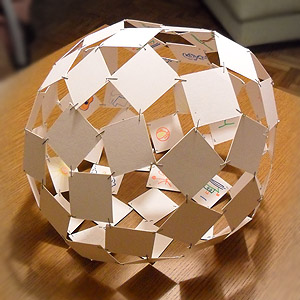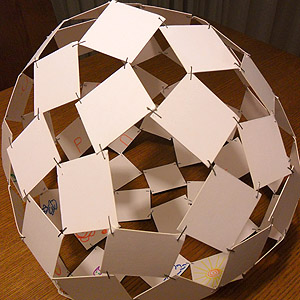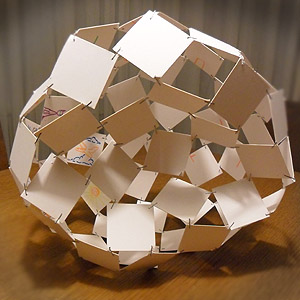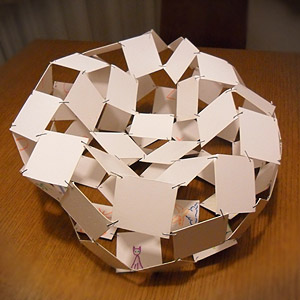Sixty Square Sphere


This was a couple of weeks ago, together with my six-year-old son Mete, we decided to make a “ball” out of old memory cards. I was curious about a subdivision method, using only planar quadrilaterals to construct a sphere (named Sixty Square Sphere. There are a couple of models on www. Of course look much better than mine:=). However, my son was expecting a “ball” to play. Then, both of our expectations have been partially met, I think. You see the component configuration of squares that create triangular voids and then, these components are added in a fashion that creates pentagonal voids. These pentagons deform the planar structure, bending it into a spherical surface.


After playing with the ball, we could no longer see the sphere anymore :(. Instead, we saw its dynamic deformation capacity. Maybe an abstract idea (the spherical configuration here) does not always present a design tool by itself. It opens up new opportunities to “drift” between digital and physical. The term “drifting between digital and physical” is new to me, and I liked it much.








